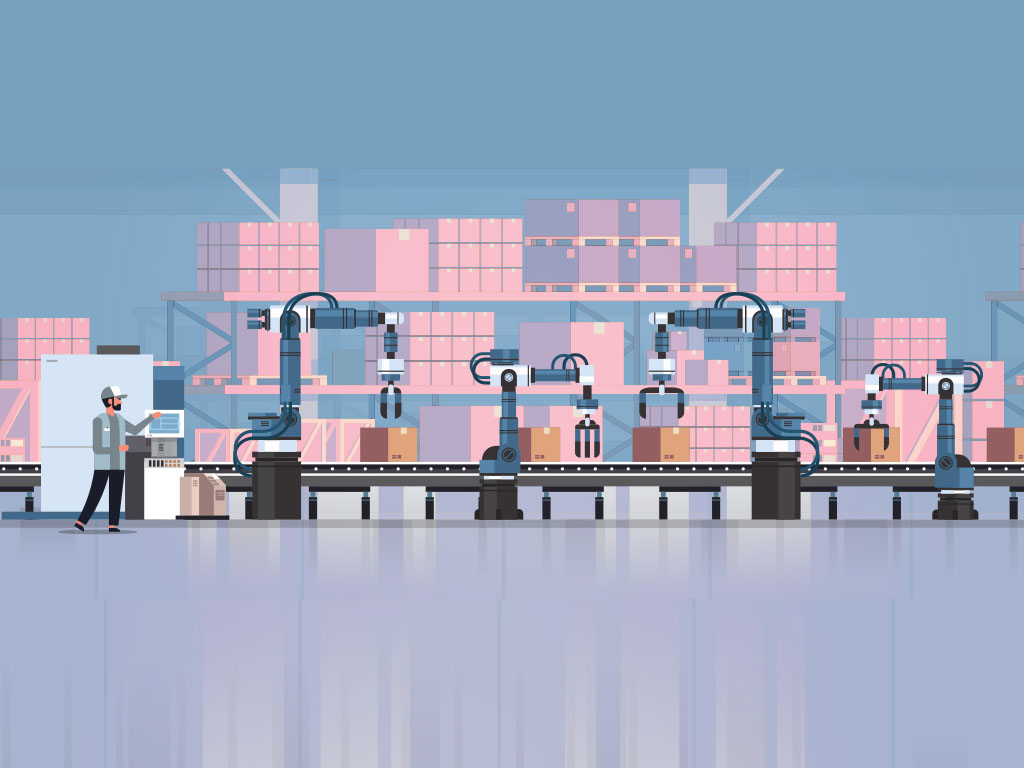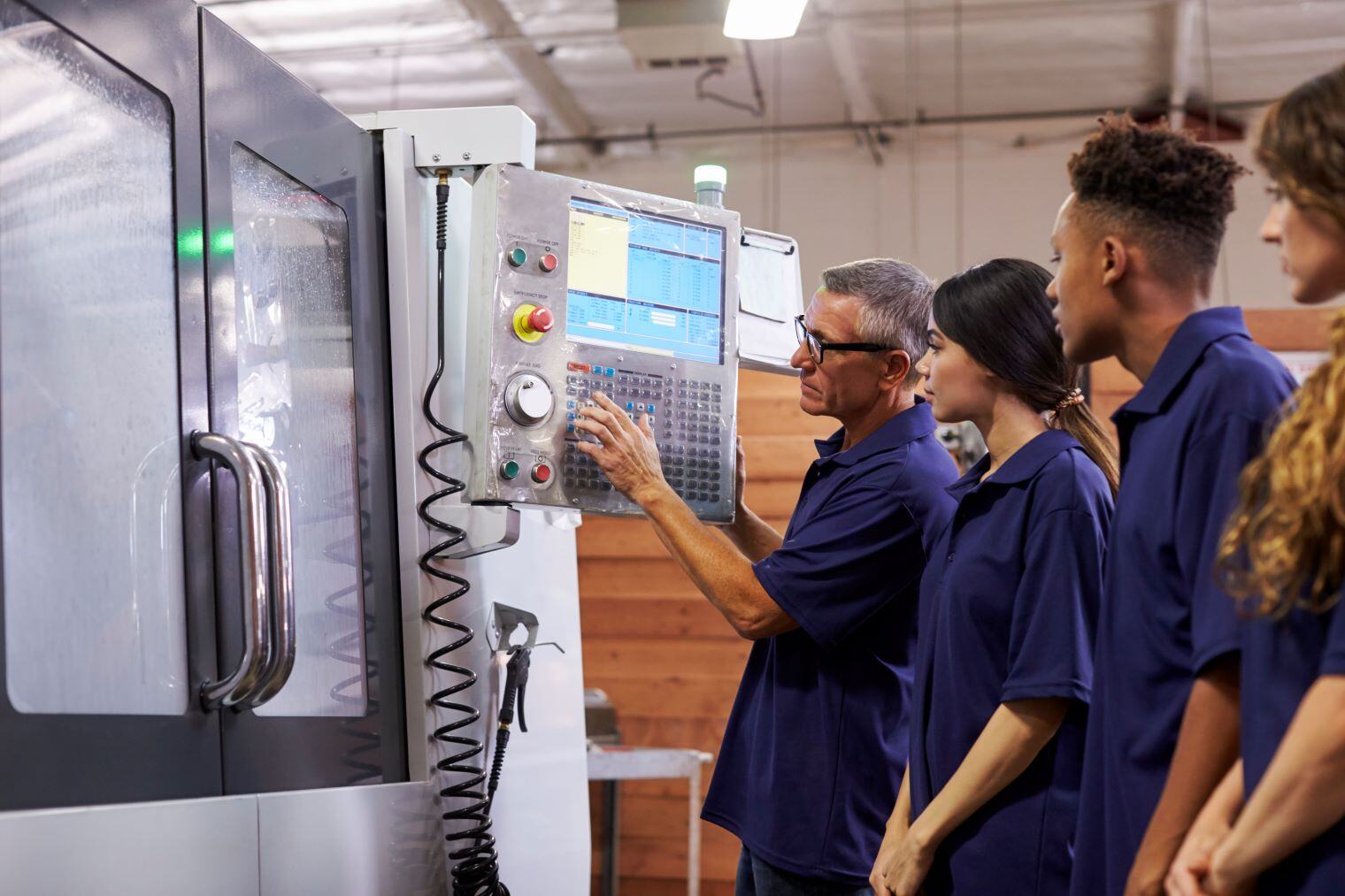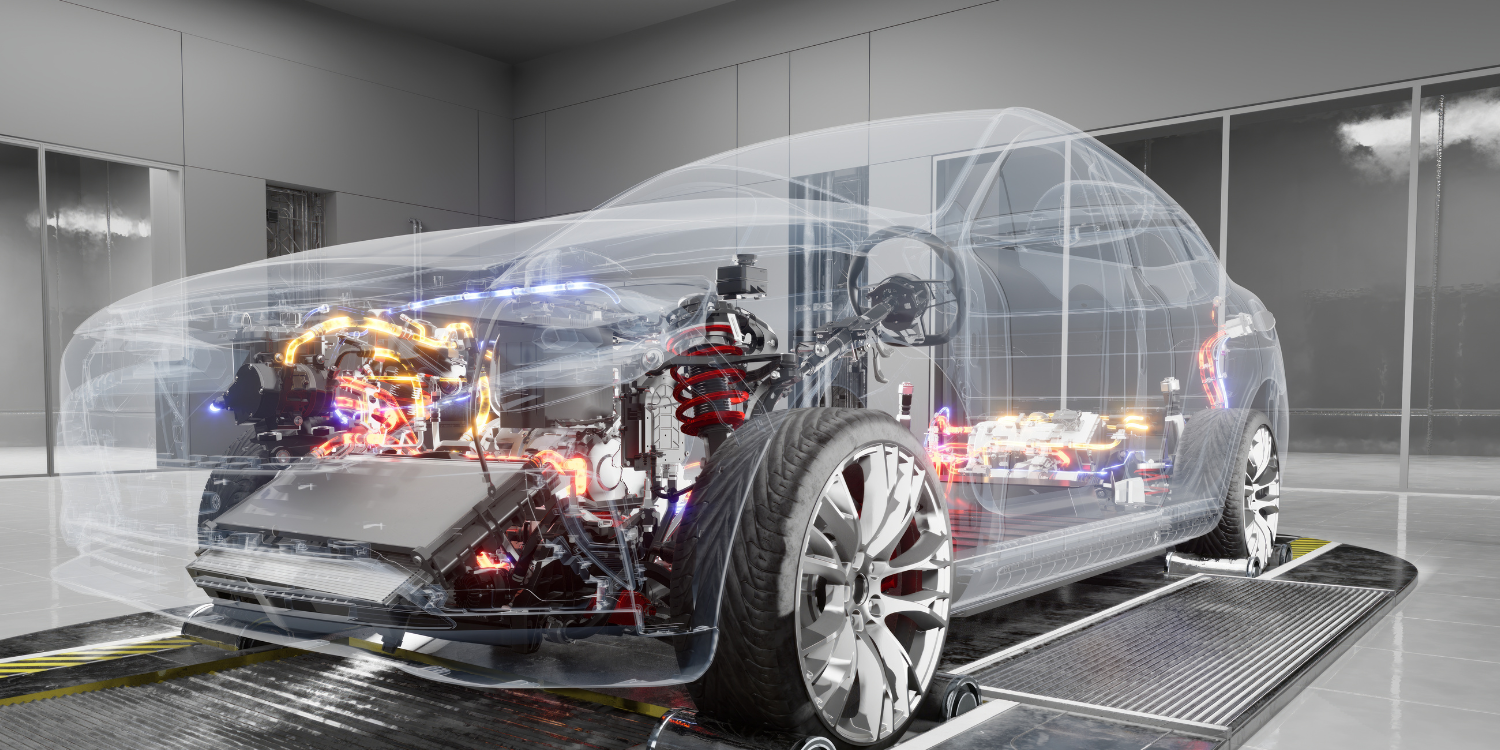How to Build an Effective Manufacturing Automation

Post Categories
Kevin
Introducing Robots into Manufacturing
The milling machine does not have a screen or buttons; instead, it consists of wheels and levers. After computers and memory chips were developed, the simple mechanical operation was able to be stored in the machine, but still, it had to be operated by a human. Since the enormous advance of the semiconductor industry, a memory chip could store substantial amounts of data. The stored data enable a machine to remember various complicated tasks and make decisions, which we now call a robot. Although engineers and scientists dreamed of manufacturing automation for a long time, the lack of robotics technology hampered its real-world application. Recently, robotics has been significantly advanced, contributing to the automation of the manufacturing process.
Incorporating the Internet of Things
By definition, The internet of things (IoT) is communication between machines, objects, and literary things. IoT has been accelerating factory automation. Speaking of factory automation, humans before the Industrial Revolution sat along the conveyor belt to carry out repeated tasks. Such manual work now has been replaced by robots, programmed to carry repeated processes automatically. The advance of network technology has developed and transformed the industrialization of IoT. Computers are implemented as part of factory networks to automate the manufacturing process and remotely communicate with factory supervisors. As shown, machines’ systematic operation has allowed the construction of unmanned factories and 24/7 unceasing motion of the engines and devices.
Photo by Lenny Kuhne on Unsplash
Synergistic Role of Lean Manufacturing
Lean manufacturing plays a significant role in manufacturing automation in maximizing production efficiency. Lean manufacturing has originated from Toyota Motors Company after World War II. Toyota made remarkable success in automobile production by applying lean manufacturing to the production line. It spreads across the globe, and other significant automakers adopted lean manufacturing into their production lines. Afterward, MIT researchers named it ‘lean,’ meaning “efficient and with no waste.” As the linguistic definition insinuates, lean manufacturing aims to design the manufacturing process more efficiently and with zero-waste.
In other words, lean manufacturing aims to achieve higher productivity by utilizing a smaller workforce, space, tools, process, and inventory compared to conventional mass production. Like Six Sigma, a brief explanation of what it is, minimizing failure (minimizing inferior products) is also an essential target of lean manufacturing. It is a complete focus on the utmost escalation of productivity and the maximization of efficiency by thoroughly extinguishing inessential components. As you discern, this implies that lean manufacturing inevitably demands a fewer number of workers to work in harsh work environments and to sacrifice for the sake of higher productivity.
For the above reasons, lean manufacturing is on the verge of controversy for disrespecting humanitarian issues such as low level of freedom, environmental quality, and excessive sacrifice of workers. Thanks to the development of robotics technology, we no longer have to compromise workers’ hardship by deploying robots instead of human workers from the development of robotics technology. On top of this, IoT fosters communication between robots so as to effectively reduce the gap of product quality between humans and robots. Since lean manufacturing is an old textbook theory, it is easily pretermitted in the current practice of manufacturing automation. Lean manufacturing is an indispensable notion in building an efficient manufacturing system.
Leading Manufacturing Automation Suppliers
Prominent players in the US are the largest electrical and electronics company, General Electric, the largest scientific and laboratory supplier, Fisher Scientific, the measurement and analytical leader, Emerson, and the automation control platform provider, Rockwell Automation. As mentioned above, achieving an automated manufacturing system requires a combined and harmonized solution across various technologies such as sensors, actuators, communication networks, robots, and software. Thus, the above companies have been developing a variety of different technologies for more than 100 years to make this work. This broad and in-depth experience enabled them to provide us with a solution and equipment for manufacturing automation.
Outside the US, current leading suppliers of manufacturing automation equipment and solutions are Honeywell and Siemens. Based in the UK, Honeywell provides diversified technologies that include aerospace products, sensing & security solutions, automotive products, advanced electronic materials, specialty chemicals, petrochemicals, and energy products & solutions. Based in Germany, Siemens focuses more on power generation, transmission, smart grid solutions, and the areas of medical equipment and diagnostics solutions. Other strong competitors are ABB from Switzerland and Mitsubishi Electric from Japan. While ABB specializes in electrification areas (i.e., electrification equipment, robotics products, automation equipment, sensing devices, actuators, generators, and converters.), Mitsubishi Electric focuses on machinery and electronics areas (i.e., heavy machinery, industrial machinery, communication systems, and electronic devices.)
Finding a Manufacturing Automation Workforce
Timpl is a specialized workforce solution provider that recruits the right people for the right job function. To build an automated manufacturing system, you can purchase and install equipment from the previously mentioned companies. However, it is important to operate the production line and apply lean manufacturing with the experts’ eye. Are you struggling to find manufacturing automation experts? Let Timpl help you find candidates for your success.


